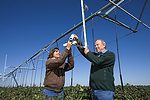Advertise Follow Us
Articles Tagged with ''usda''
Survey: Farmers More Interested in Boosting Yields Than Cost Cutting
Farmers are more than twice as likely to be motivated by how high they can get their yields than by lowering their cost of unit of production. That's according to a recent survey Millennium Research completed for the Precision Ag Institute.
Read More




![[Technology Corner] Helping Your Customers Determine Which Technology is Right for Them](https://www.precisionfarmingdealer.com/ext/resources/2025/03/26/Helping-Your-Customers-Determine-Which-Technology-is-Right-for-Them.png?height=290&t=1743084621&width=400)


